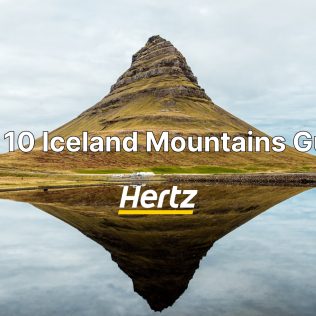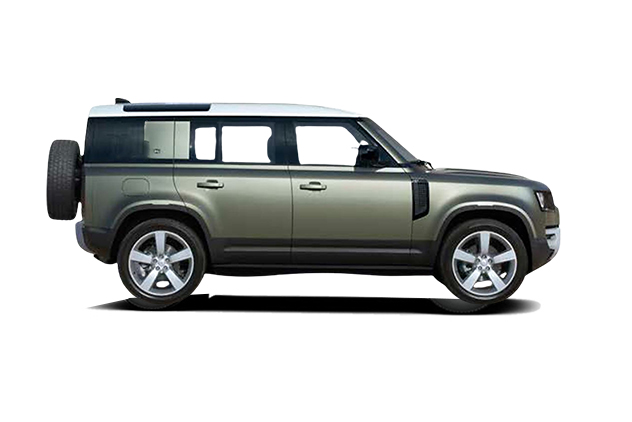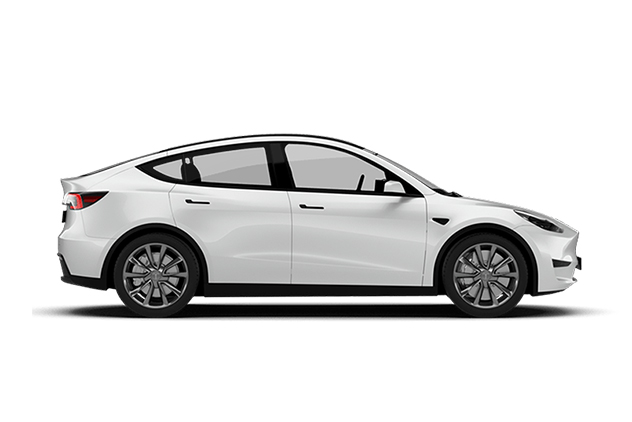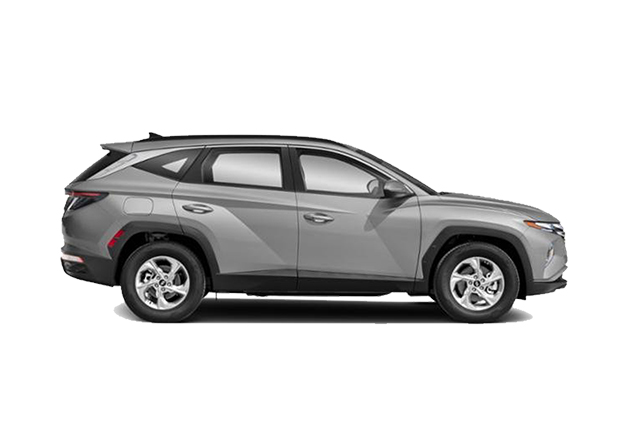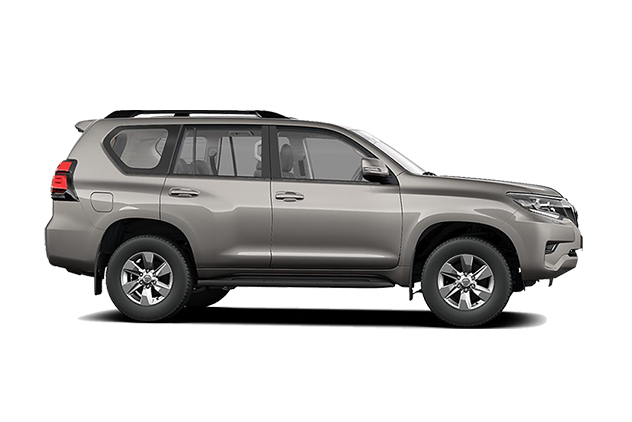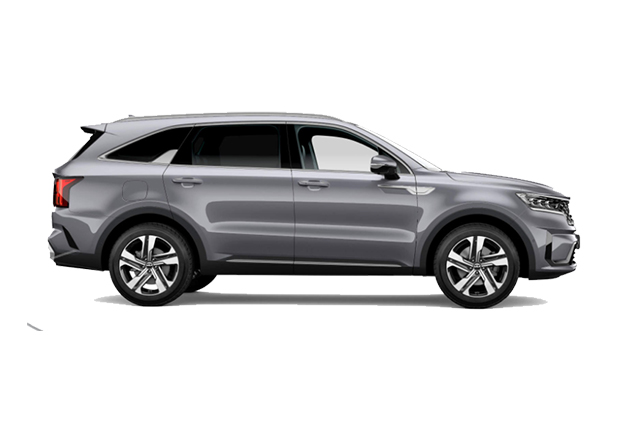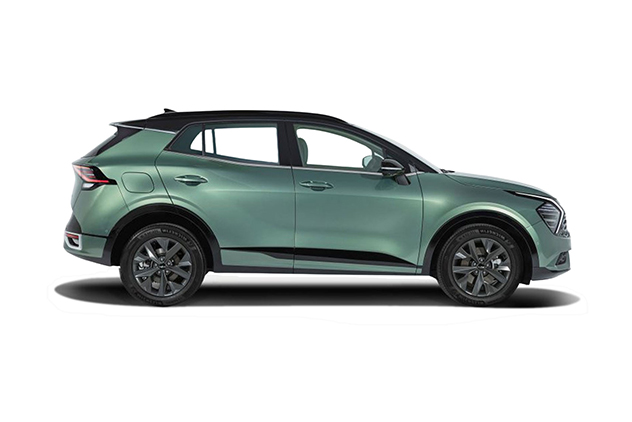Iceland has some of the most incredible mountainous landscapes in the world, thanks to its abundance of volcanic activity. From snow-capped peaks to volcanic craters, the mountains of Iceland are a symbol of the country’s untamed beauty and geological past.
Whether you’re a photographer, an avid hiker or simply a nature lover, each of Iceland’s mountains has something unique to discover. In this guide, we explore ten of Iceland’s most prominent mountains, including everything you need to know to incorporate them into your Iceland itinerary.
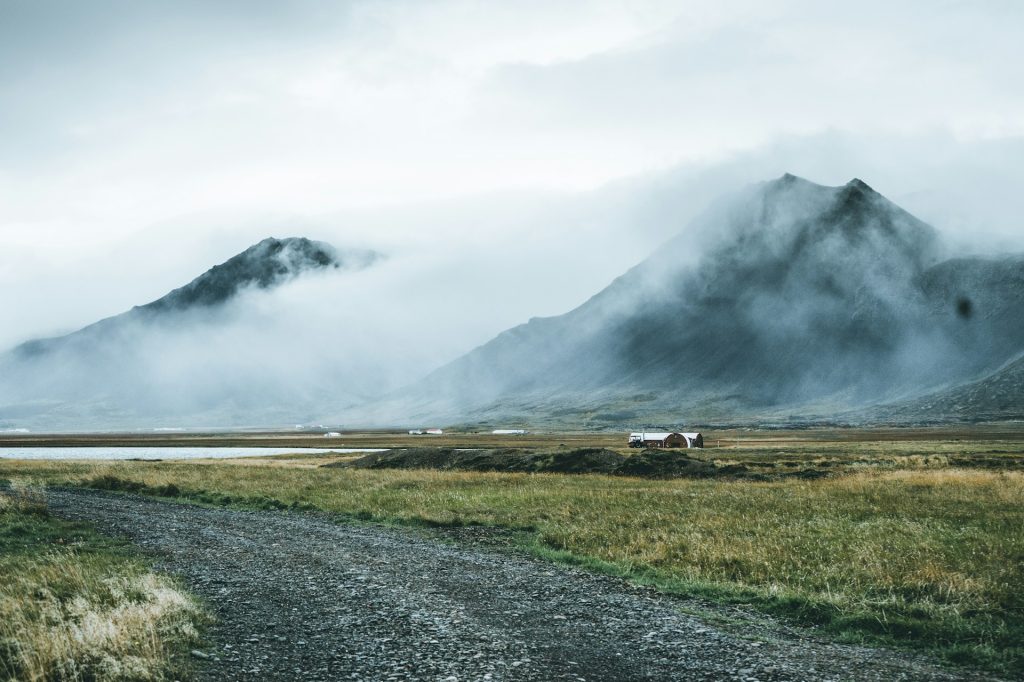
Does Iceland Have Mountains?
Yes, Iceland does indeed have many mountains! The abundance of mountains in Iceland is due to two main factors. The first factor that influences its huge number of volcanoes is its location on a tectonic plate boundary.
Iceland sits right on top of the Mid-Atlantic Ridge, where the Eurasian and North American tectonic plates are pulling apart. This constant movement creates a lot of volcanic activity, and as the plates diverge, magma erupts and cools, forming mountains over time.
Because Iceland is located on a hot spot, an area with unusually high geothermal activity with coutless hot springs and frequent volcanic eruptions, an example would be the reykjanes peninsula in recent 4 years since 2021. These eruptions spew lava and ash, which hardens and builds up, contributing to the formation of mountains.
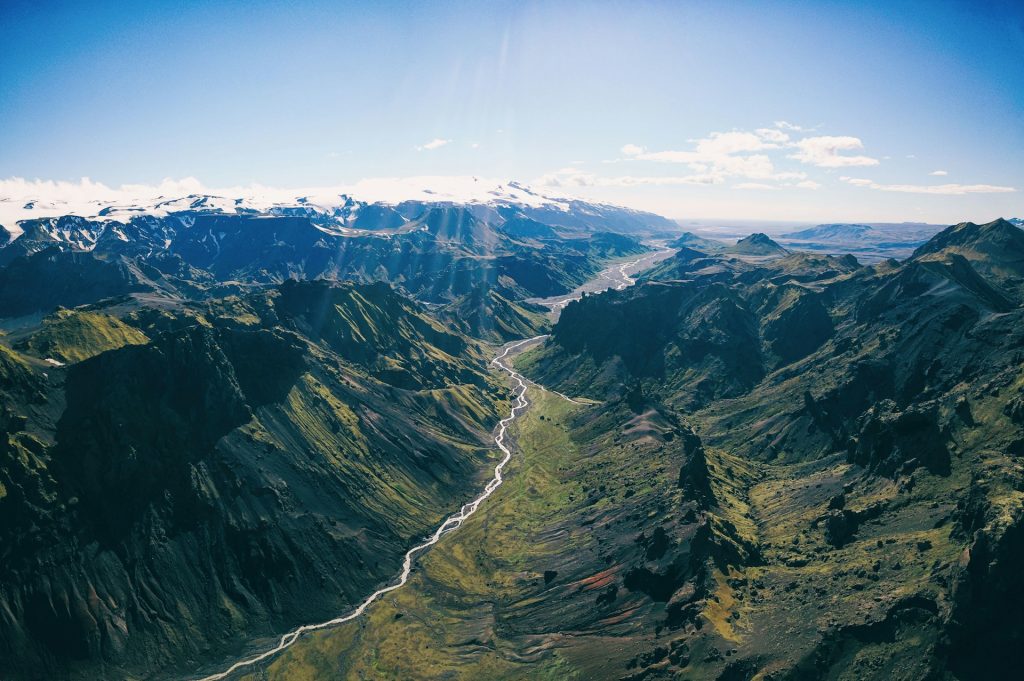
The 10 Best Mountains to Visit When Traveling in Iceland
1. Kirkjufell Mountain in Snæfellsnes Peninsula
Kirkjufell, also known as Church Mountain, is a striking mountain located on the north coast of Iceland’s Snæfellsnes Peninsula. This peninsula is also known as the the entrance to the center of the earth in the book by Jules Verne ‘Journey to the Center of the Earth (1964)’.
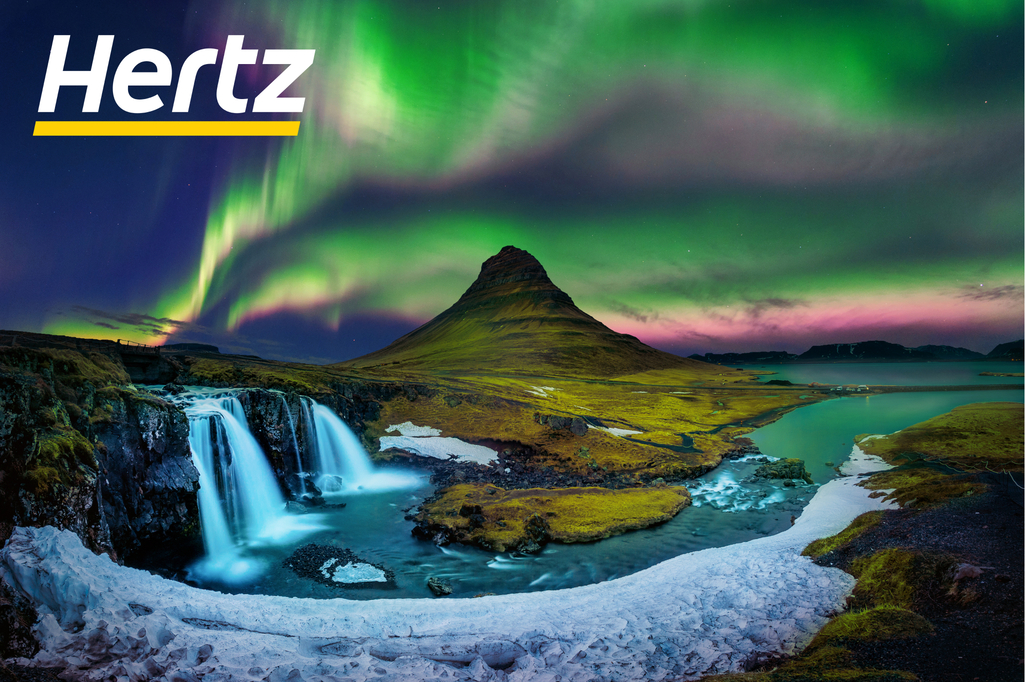
This 463-meter tall mountain has a distinct, symmetrical peak that resembles a church steeple, hence its nickname. Sitting isolated near the coast, it creates a dramatic landscape that’s a favorite among photographers. If you’re a Game of Thrones fan, you might recognize Kirkjufell as the Arrowhead Mountain featured in Season 7.
This mountain is about a 2-hour drive north of Reykjavik along Iceland’s Ring Road and Snaefellsnesvegur Road. It is accessible all year round, but summer allows visits to take advantage of the long daylight hours, perfect for capturing the midnight sun and lush green landscapes. In the winter, the mountain is ice-capped, and you may even have the chance to see the northern lights, but just be aware of the more challenging weather conditions.

2. Vestrahorn mountain in the East
vestrahorn mountain also sometimes called Stokksnes or Batman Mountain, is a mountain located in southeast Iceland on the Stokksnes Peninsula, not far from the town of Höfn Iceland. Vestrahorn features two distinctive, sharp peaks that rise 454 meters (1,394 ft) above sea level.
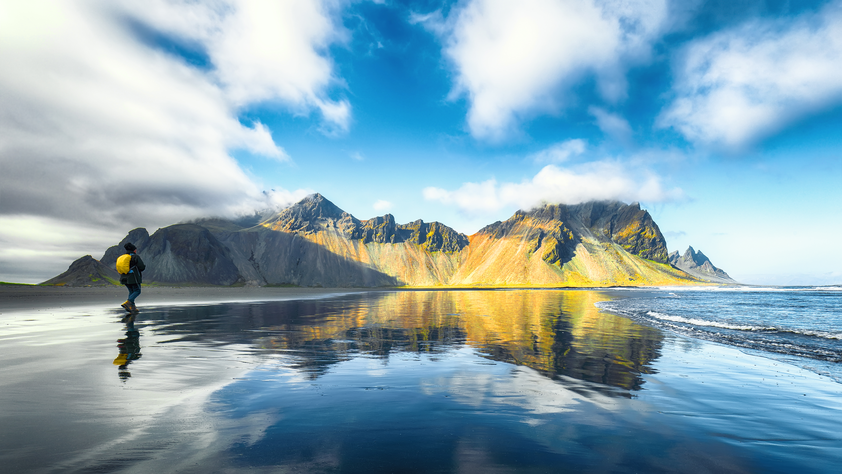
Unlike most Icelandic mountains, Vestrahorn is composed of iron- and magnesium-rich gabbro rock, giving it a dark and rugged appearance. This dark coloring stands out dramatically against the surrounding Iceland black sand beach and the often-calm turquoise water. The Stokksnes area is a popular habitat for seals, and you might be lucky enough to spot them lounging on the black sand beach while you capture pictures of the mountain.
Vestrahorn is approximately a 6-hour drive east of Reykjavik along the Ring Road (Route 1). You can also take a domestic flight from Reykjavik to Höfn and rent a car from there. The drive from Höfn to Vestrahorn on the Stokksnes Peninsula takes about 15 minutes. The best time to visit Vestrahorn is in the summer or autumn, as the road conditions can be difficult in the winter.
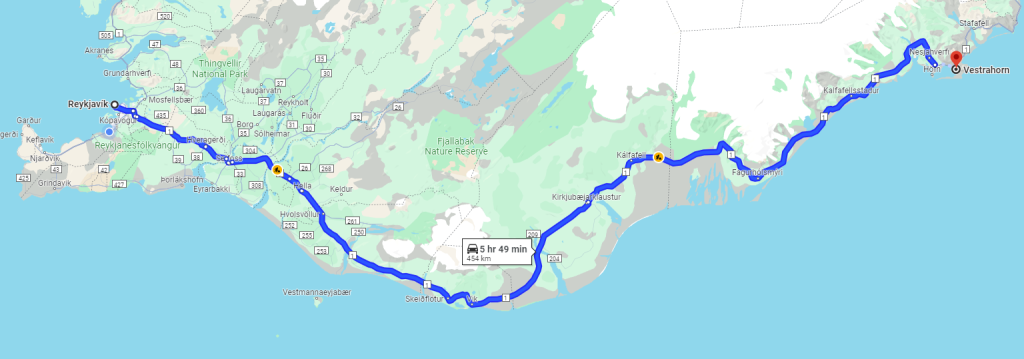
3. Lómagnúpur in the South
Lómagnúpur, meaning “Seagull Peak” in Icelandic, is a colossal and eye-catching mountain on the South Coast, close to the town of Vík í Mýrdal.
Standing at a height of 764 meters (2,506 ft), it might not be the tallest peak in Iceland, but it certainly makes a statement due to its dramatic features. Lómagnúpur’s most striking characteristic is its flat top, which appears almost chopped off.
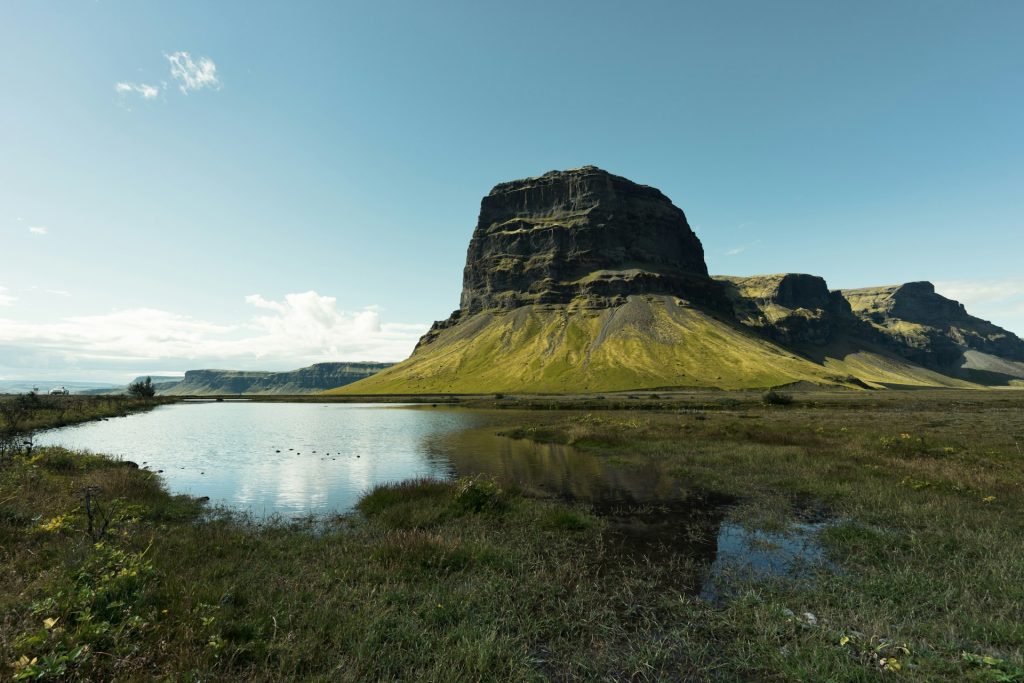
This unique feature is formed from a layer of palagonite, a volcanic rock created by the interaction of water and volcanic ash. Geologists estimate the flat top to be over a million years old! The southern face of Lómagnúpur boasts a sheer 690-meter (2,264-ft) cliff, making it the highest cliff in Iceland.
Lómagnúpur is easily accessible by car. It’s located directly off the Ring Road (Route 1) between the towns of Vík í Mýrdal and Kirkjubæjarklaustur. The drive from Reykjavík is roughly a 3-hour journey along the Ring Road. While Lómagnúpur is accessible all year, travelers should rent a 4X4 vehicle if visiting in the winter months to ensure safety and comfortability in unpredictable conditions.
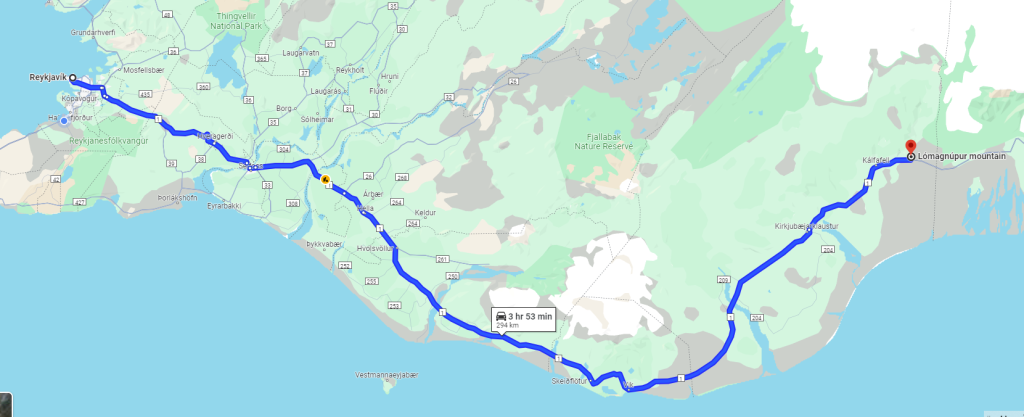
4. Mount Esja Near Reykjavik’s Seashore
Mount Esja, often called Esjan by locals, is a popular mountain range located just north of Reykjavík, the capital of Iceland. Standing at a height of 914 meters (3,000 ft) at its peak, Esja is a prominent feature of the city’s skyline, and unlike many of Iceland’s other mountains, it’s easily accessible from Reykjavik, making it a great option for a day trip.
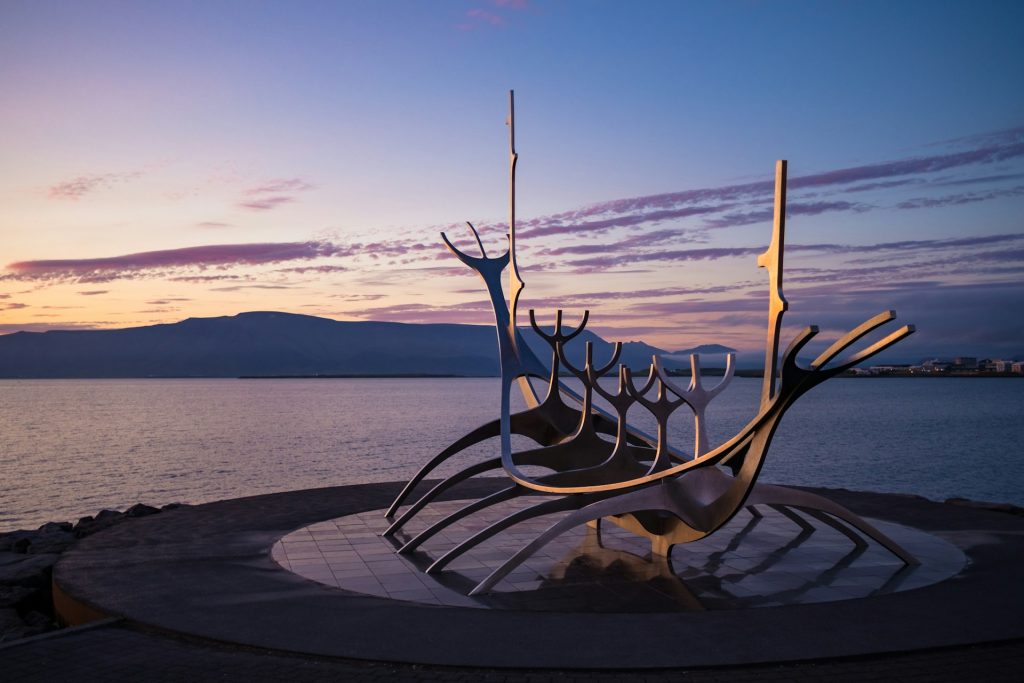
You can even see it directly from the city. Mount Esja has a network of well-maintained hiking trails that cater to various fitness levels. If you hike to the summit, you’ll get panoramic views of Reykjavík, the surrounding coastline, and the Snæfellsnes Peninsula.
Mount Esja is easily accessible by car from Reykjavík. The trailhead is located at Þórólfell, which is about a 20-minute drive from the city center. You can visit Mount Esja all year long and see the mountain when you’re walking along Reykjavik’s seaside.
Due to its proximity to the city, you can expect more crowds on the trails, especially in the summer months. And during the winter, you may choose to view the mountain from a distance as hiking the summit can be challenging with the snow.
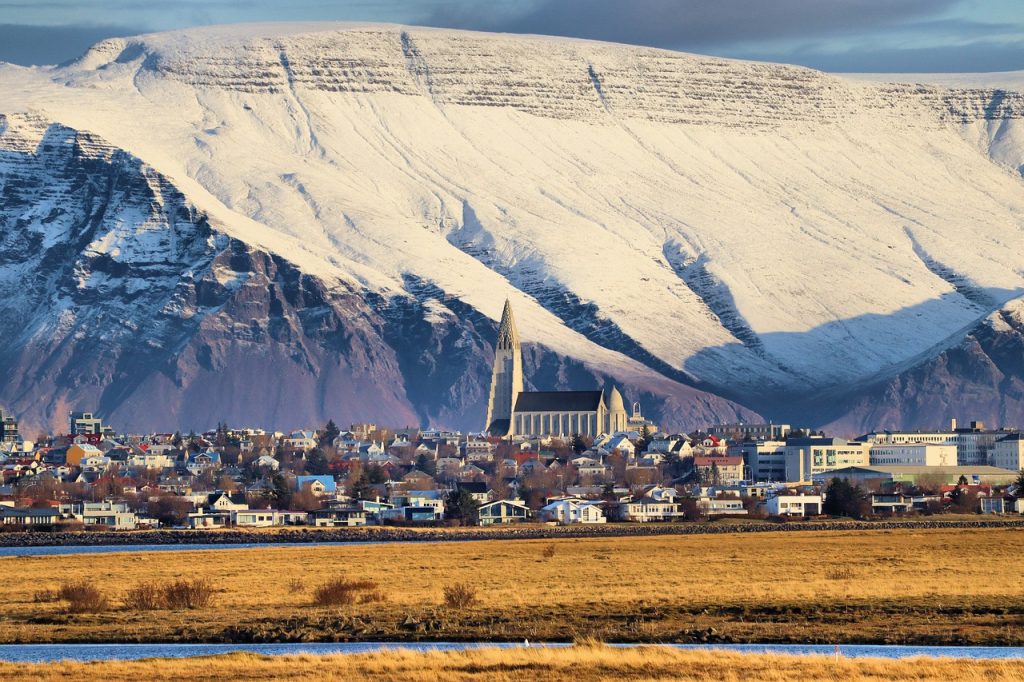
5. Landmannalaugar Mountains: The Colorful Volcanic Mountains
Landmannalaugar is a geothermal area within the colorful rhyolite mountains of the Fjallabak Nature Reserve in Iceland’s Southern Highlands. These peaks are composed of rhyolite, a volcanic rock that creates a mesmerizing spectrum of colors – reds, pinks, greens, blues, and yellows.
Landmannalaugar serves as the starting point for the world-renowned Laugavegur Trail, a 55-kilometer multi-day hike that takes in some of Iceland’s most dramatic scenery. But even if you’re not up for a multi-day adventure, there are numerous shorter day hikes around the area. There are also many natural geothermal pools, steaming fumaroles, and mud pots that you’ll see bubbling on your adventures.
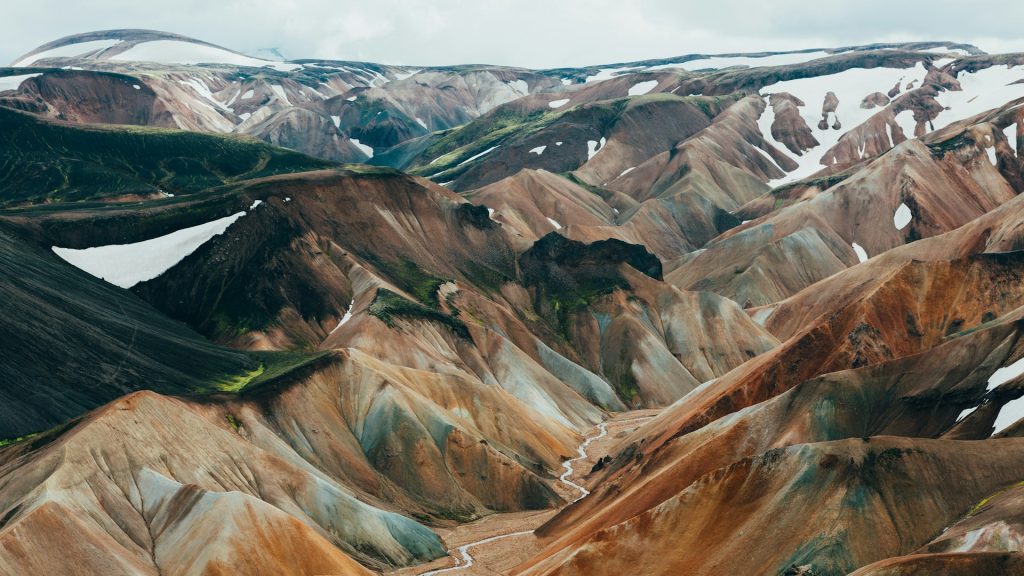
Located in the Icelandic Highlands, Landmannalaugar offers a true escape from the crowds. Its remote location means you’ll need a four-wheel drive vehicle to navigate the unpaved F-roads.
Landmannalaugar is only accessible during the summer months, typically from late June to September. This is due to snow blocking the access roads for most of the year. It takes about 3 and a half hours to drive there from Reykjavik.
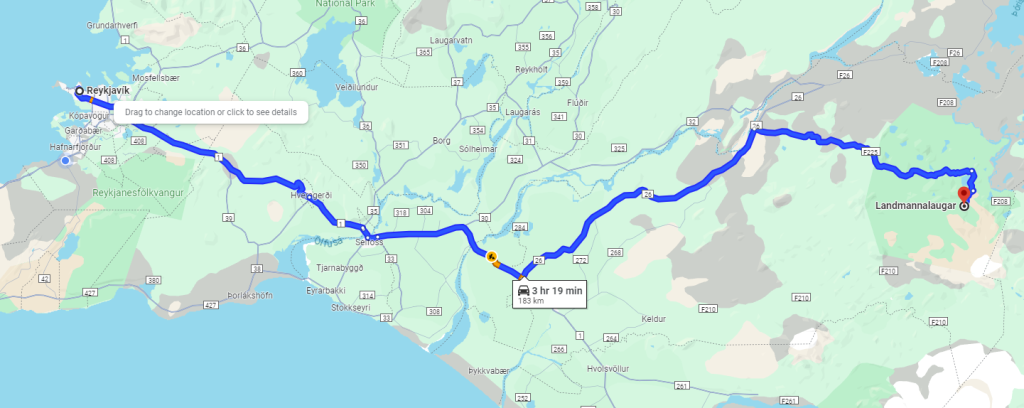
6. Hverfjall Mountain: 4,500-Year-Old Mountain in North Iceland
Hverfjall Mountain is a volcanic crater in a region of Northern Iceland called Mývatn. Hverfjall is a perfectly shaped tuff ring volcano, meaning it’s a crater formed by explosive eruptions of ash and rock, and it’s estimated to be 4,500 years old.
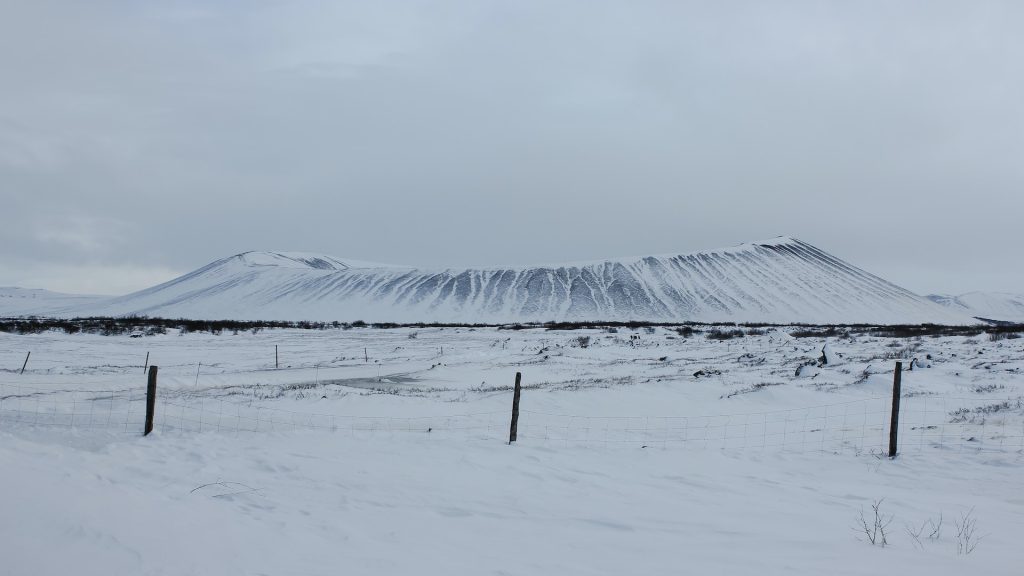
It is about 1 kilometer (0.6 miles) in diameter and has a nearly symmetrical cone with a steep inner slope. Hverfjall offers a relatively easy hike to the rim of the crater. Two well-maintained trails lead up the side, with the northern route being the shorter and more popular option. From the top, you can see Lake Mývatn, the volcanic Krafla geothermal area, and other interesting geological features.
Hverfjall is accessible year-round but can become inaccessible in the winter if sudden bad weather occurs. For that reason, we recommend visiting in spring or summer.
Hverfjall is approximately a 6-hour drive from Reykjavík along a mix of paved and gravel roads. While you don’t necessarily need a four-wheel drive vehicle to reach Hverfjall during the summer months, it’s recommended if you plan on exploring other off-road destinations in the Mývatn area. There’s a designated parking area near the base of the crater with a pay-and-display system.
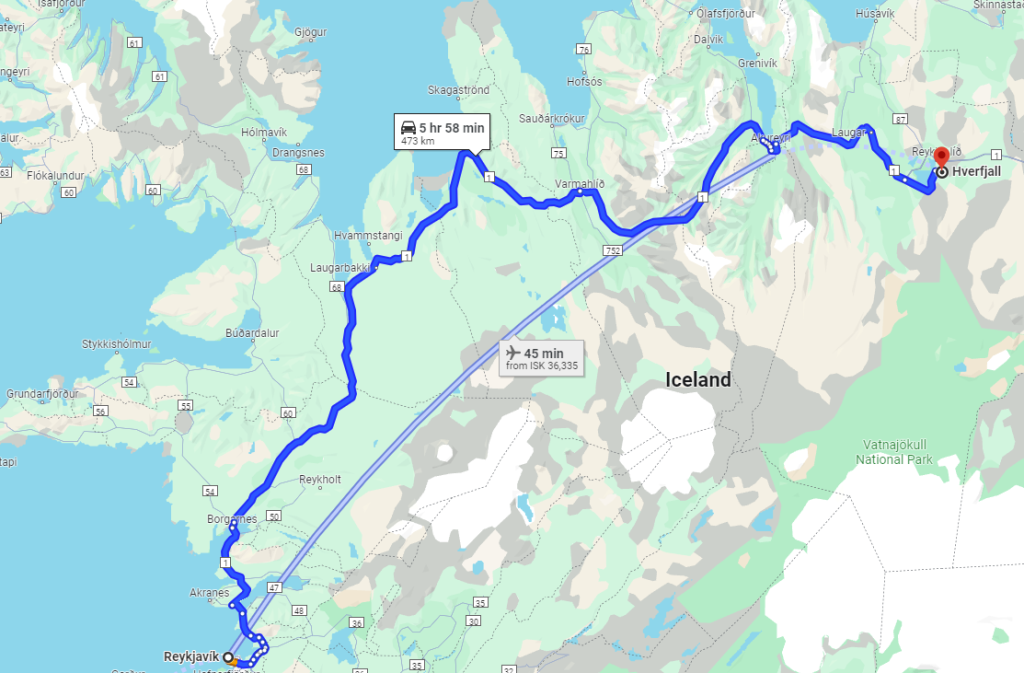
7. Hekla Mountain: “The Gateway to Hell”
Hekla is a legendary and highly active volcano located in the south of Iceland. Standing at a height of 1,491 meters (4,892 ft), it’s one of Iceland’s most prominent and frequently erupting mountains. Nicknamed “The Gateway to Hell” during the Middle Ages due to its frequent and fiery eruptions, Hekla has a long history of volcanic activity.
Over 20 eruptions have occurred in and around the volcano since the year 1104, making it one of Iceland’s most active volcanoes. Hekla is a stratovolcano, which has a cone-shaped peak built up from layers of lava, ash, and tephra. However, Hekla also has a long fissure, a crack in the Earth’s crust, running along its peak called Heklugjá. This fissure plays a significant role in major eruptions.
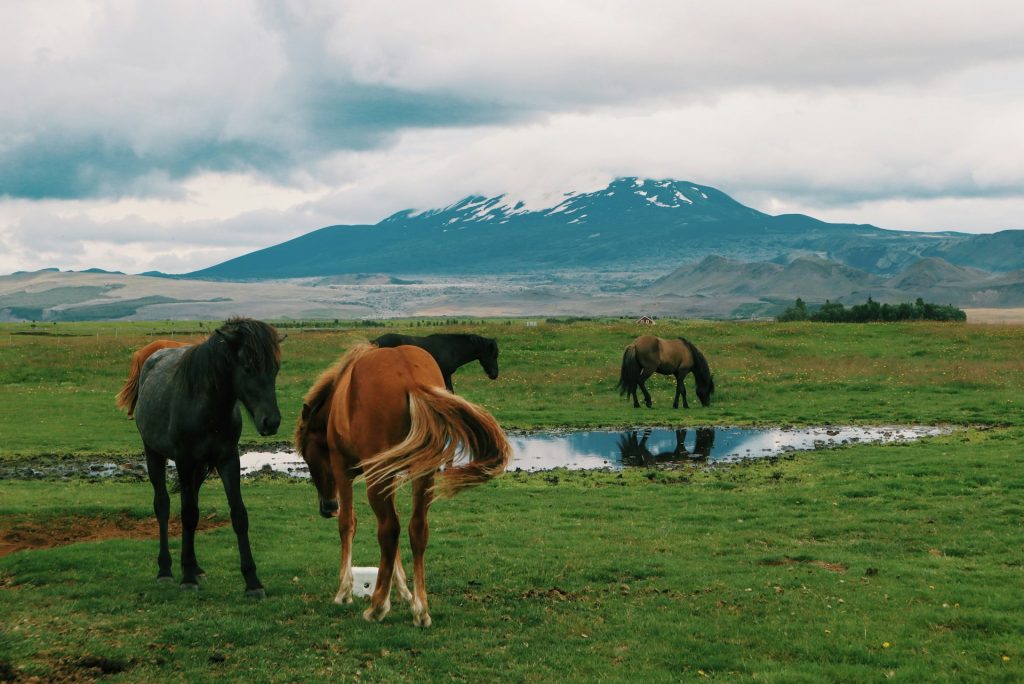
While Hekla is an active volcano, it’s still a popular destination for experienced hikers in summer months during periods of dormancy.
A marked trail leads most of the way to the summit, which takes about 4 hours on a challenging 6.5 km (4 mile) trail. However, even during dormancy, visitors should stay informed about the volcano’s status through the Icelandic Meteorological office (vedur.is ). You can also appreciate the mountain from a distance all year round, with several tour operators offering guided tours to viewpoints near Hekla.
Hekla is situated roughly a 110-kilometer (70-mile) drive east of Reykjavík, which takes approximately 1.5 to 2 hours. If you choose to drive, a four-wheel drive vehicle is recommended, especially if you plan on exploring any off-road areas near the volcano.
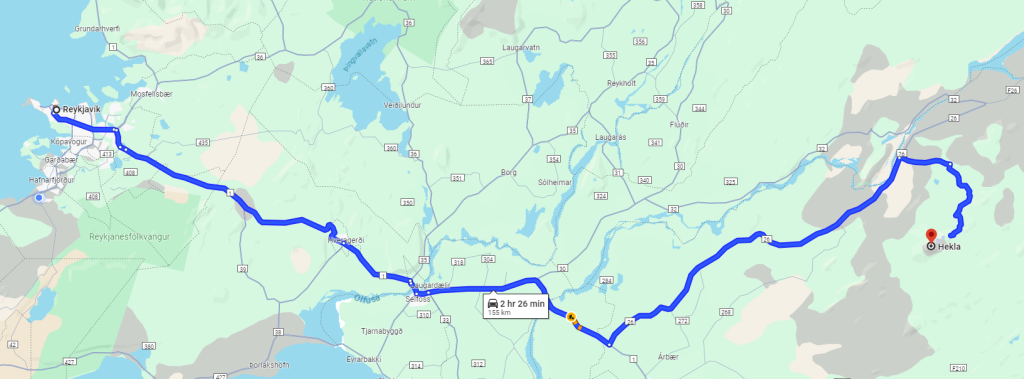
8. Hvannadalshnúkur: The Highest Mountain in Iceland
Hvannadalshnúkur is essentially the “Mt. Everest” of Iceland. Towering at a height of 2,110 meters (6,920 ft), it’s the highest peak in the entire country and a true test for experienced climbers.
Hvannadalshnúkur is the summit of Öræfajökull, a massive stratovolcano covered by Europe’s largest glacier, Vatnajökull. Climbing Hvannadalshnúkur involves navigating a challenging terrain of glaciers, crevasses, and steep inclines. You’ll require experience with glacier travel, proper equipment, and, ideally, a qualified guide, most ideally, you need to be a professional mountaineer to take this challenge.
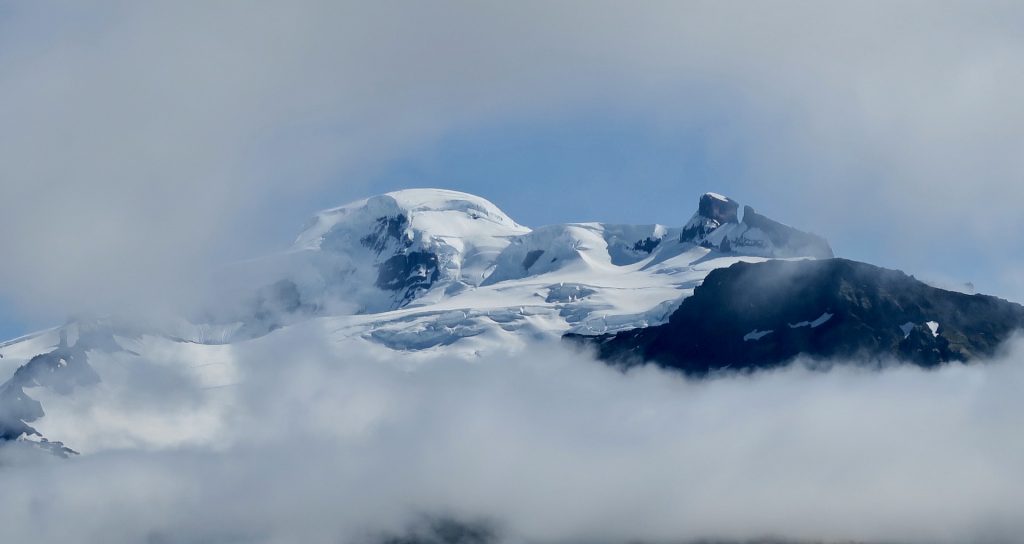
Due to the challenging nature of the climb and the dependence on weather conditions, the window for summiting Hvannadalshnúkur is relatively narrow. The most favorable period for attempting the climb is between April and June, when the snowpack is more stable and daylight hours are longer.
For those not hiking, Skaftafell National Park offers several viewpoints where you can catch glimpses of Hvannadalshnúkur, particularly on a clear day. Although you may not be able to see the summit itself, you can still portions of the mighty mountain.
The most common way to reach the trailhead in Vatnajökull National Park is by car. From Reykjavik, it’s a roughly 6-hour drive east along the Ring Road (Route 1) with a turn onto road 998 towards Skaftafell National Park. A four-wheel drive vehicle is highly recommended.
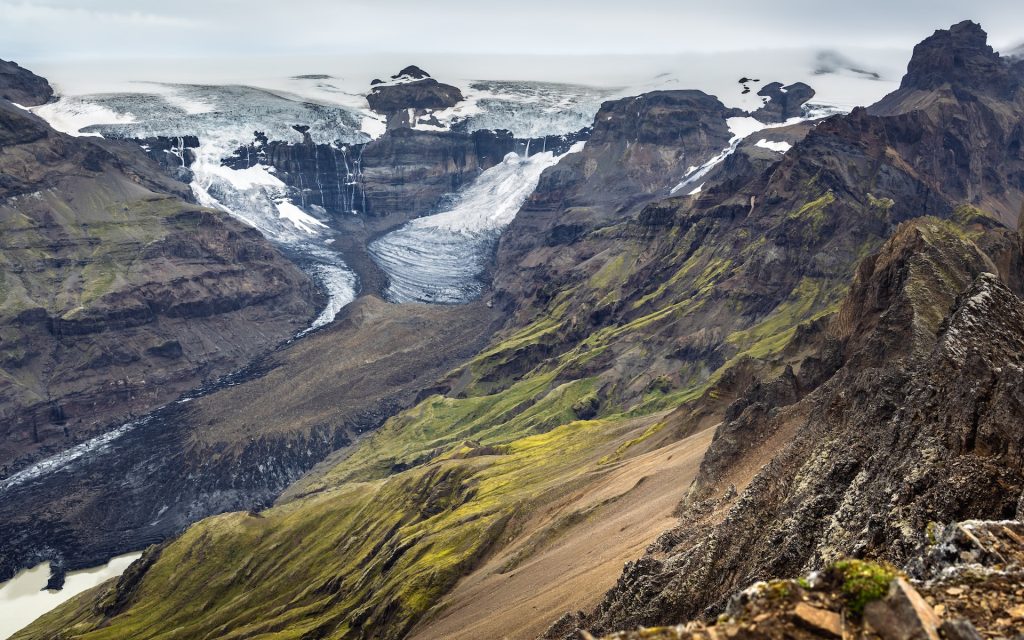
9. Hornbjarg Mountain: Uninhabited Region in Westfjords
Hornbjarg is a series of enormous cliffs located within the Hornstrandir Nature Reserve in Iceland’s Westfjords. The cliffs at Hornbjarg are huge, reaching heights of up to 534 meters (1,752 ft) and 429 meters (1,407 ft) at their two highest peaks, Kálfatindur and Jörundur. Hornbjarg is a haven for birdlife, particularly during the summer months.
Millions of seabirds, including guillemots, kittiwakes, razorbills, and arctic terns, flock to the cliffs to nest and raise their young. The cliffs are in an uninhabited region of the Hornstrandir Nature Reserve, which is a remote and protected area, giving visitors a truly immersive experience with nature.
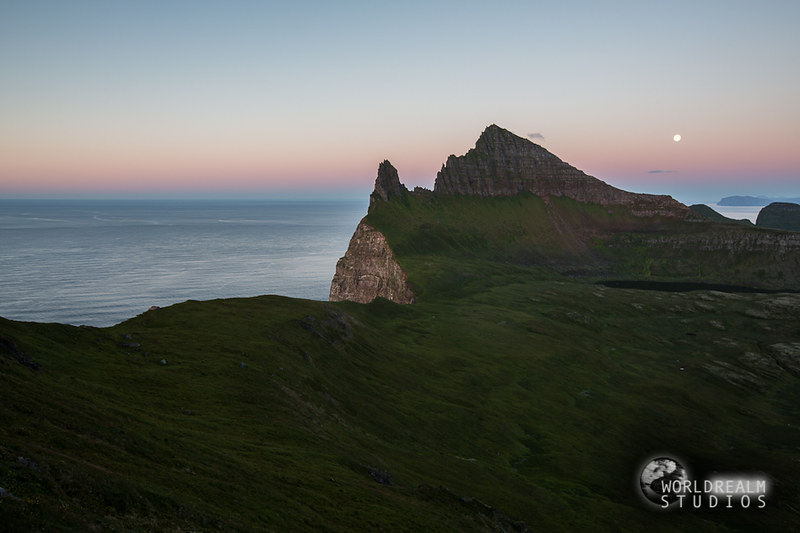
Hornbjarg itself is not accessible by car. The Hornstrandir Nature Reserve is remote and can only be reached by ferry from Ísafjörður, the largest town in the Westfjords. Driving from Reykjavík to Ísafjörður, the jumping-off point for ferries, takes roughly 6-7 hours via the Ring Road (Route 1) and some fjord crossings.
Once in Ísafjörður, you can take a ferry to Hornstrandir. However, the most common way to see the cliffs up close is by joining a boat tour offered by several operators in Ísafjörður. These tours typically sail along the dramatic cliffs of Hornbjarg, allowing for great views and wildlife-watching opportunities.
Keep in mind that the ferries and boat tours do not operate year-round. They typically run consistently between May and September, provided the waters are calm, and the weather conditions are safe.

10. Snæfellsjökull Mountain: Glacier Mountain
Snæfellsjökull is a glacier-capped stratovolcano that stands out on the western tip of Iceland’s Snæfellsnes peninsula. Standing at 1,446 meters (4,744 ft), it’s part of Snæfellsjökull National Park and a popular destination for day trips from Reykjavík. The area is nicknamed “Iceland in Miniature” due to its diverse geological features, including glaciers, volcanic craters, lava formations, and black sand beaches.
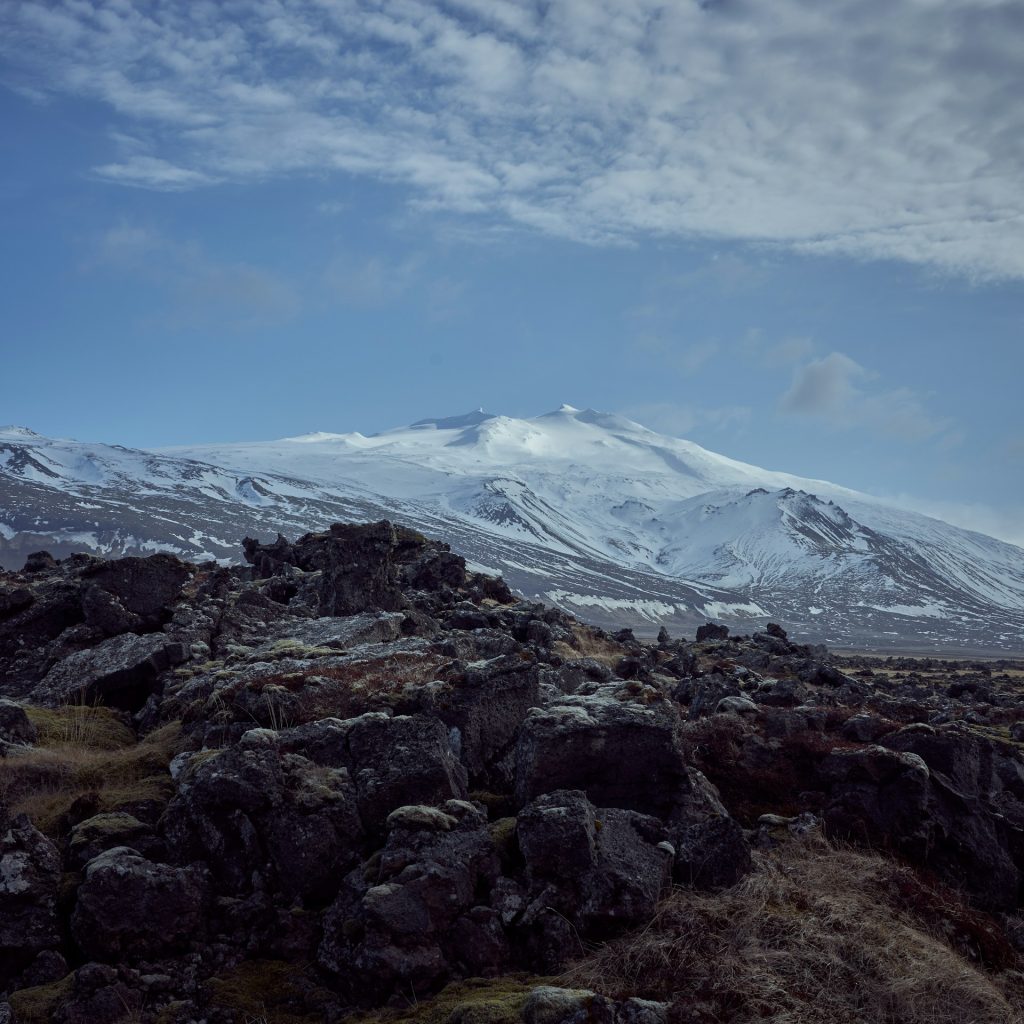
Travelers can visit Snæfellsjökull Mountain year-round. Summer months offer pleasant weather and long daylight hours for exploring the national park and hiking. Shoulder seasons provide a balance between decent weather and fewer crowds, while the winter brings more challenging weather conditions and the opportunity to see the northern lights.
Getting to Snæfellsjökull is relatively straightforward. By car, the drive from Reykjavík takes approximately 2-3 hours, following the Ring Road (Route 1) for most of the way with a turn onto the Snæfellsnes peninsula via either South Saelaland (574) or West Iceland Coastal Road (56). The distance is roughly 160 kilometers (100 miles).

Best Rental Car to Rent for This Trip: 4WD Rental Cars
Regardless of which Iceland mountains you are planning to visit, a 4X4 rental vehicle is the obvious choice. 4WD cars and SUVs can access all roads in the country, including the mountain roads (F-roads), which are only open during the summer months.
While 2WD compact and mid-size cars will enable you to navigate paved routes, if you want full freedom to visit Iceland’s mountains, then a 4WD rental vehicle is absolutely the best choice.
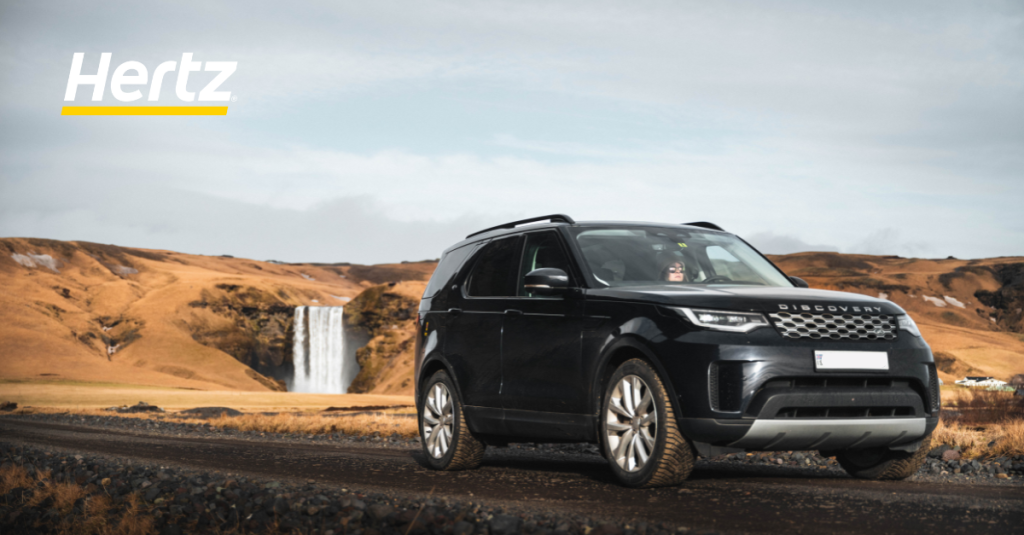
Start Your Iceland Mountain Adventure
Exploring Iceland’s mountains is an adventure of a lifetime. Each mountain offers something unique and unforgettable to explore. To fully enjoy the freedom and flexibility of your journey, renting a car is essential.
Hertz Iceland provides reliable 4WD rental vehicles that can handle Iceland’s diverse and often challenging terrain, ensuring you can easily reach each stunning peak. Book your rental car with Hertz Iceland today and get ready to take your Iceland adventure to new heights.
